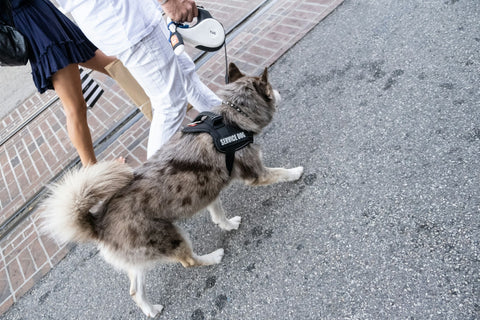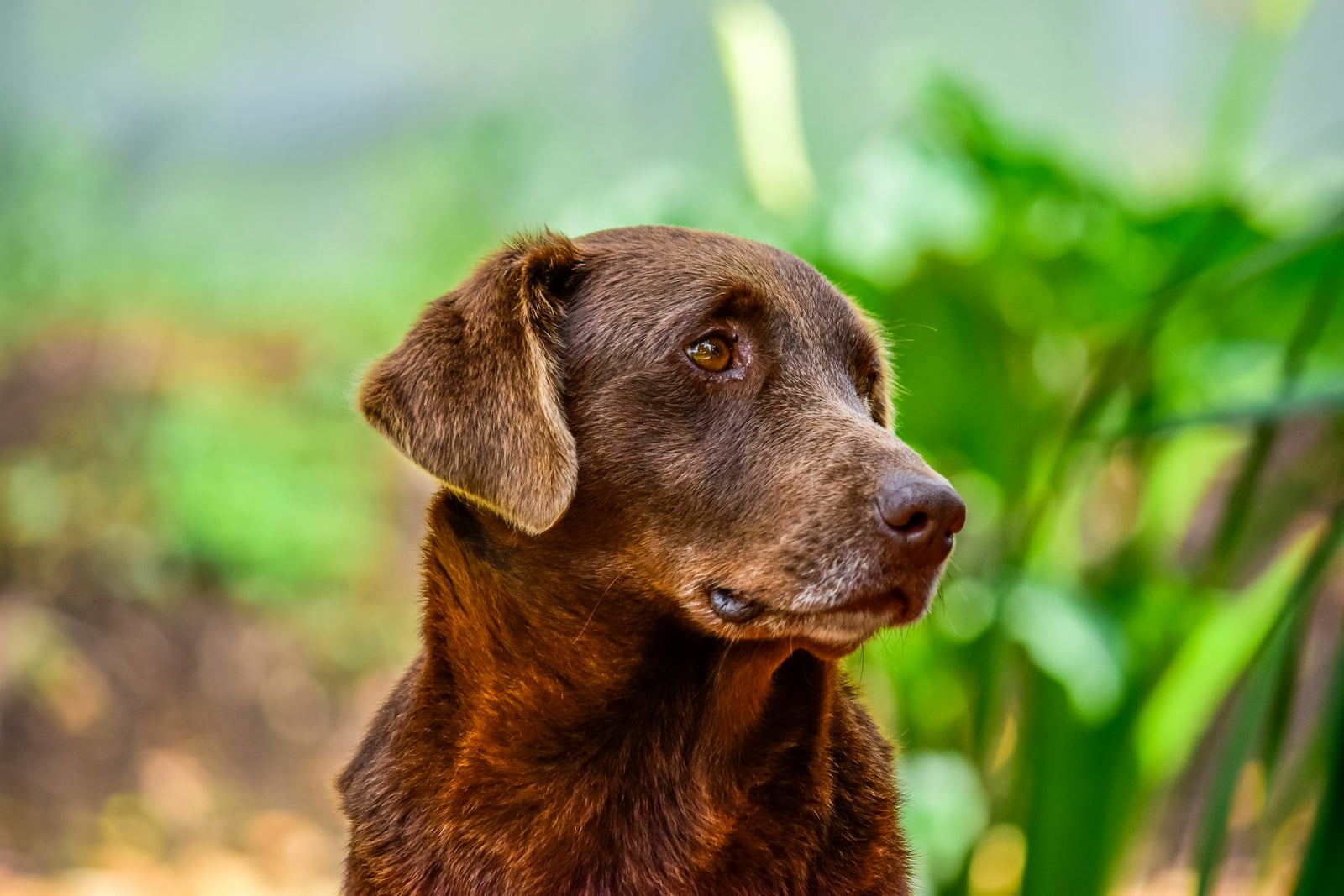Adopting a retired service dog shares many of the same considerations you would have if you decide to adopt a pup from a shelter. However, there are some key differences worth keeping in mind.
Retired service dogs are usually older, and have strong attachments to their previous owners. Their unique needs often require you to go through a more involved adoption process and consult special organizations.
What’s Different About Adopting a Retired Service Dog?
You might decide to adopt a retired service dog because of their even-tempered disposition, high level of training, and good behavior. But adding a former service dog to the family isn’t quite the same as visiting your local shelter and picking out a pup.
1. Service Dogs May Need More Time to Transition
The first thing to think about is why a retired service dog is up for adoption. These dogs develop strong bonds with their owners, many of whom often choose to keep the dog as a pet after they can no longer act as a service dog.
However, handlers aren’t always able to keep their devoted pup. Sometimes, their health and other issues make it difficult to care for both their retired service dog and a new service dog. In other instances, the person may need to move into a specialized care facility where dogs aren’t permitted, or the person may have passed away.
No matter the reason, if a retired service dog can no longer live with the person they’ve attended to for so long, it can be extremely difficult. These dogs develop a strong relationship with their handlers since they have worked so closely with them for many years.
When this relationship ends, it can be heartbreaking, and it will take some time to help the dog transition to a new home. Over time, with patience, love, and care, they can begin to form a bond with you. However, if you are unsure about making a long-term commitment to a new pup, a retired service dog might not be your best option.
2. You Likely Won’t Have Access to Young Dogs
If you want to adopt a puppy or younger dog, then a retired service dog isn’t the best way to go about it. Typically, service dogs retire around 10 years old. The age range for retirement can be between 8 and 12 years depending on the dog’s health, mobility, and overall well-being.
3. The Process of Adopting a Retired Service Dog Takes a Little Longer
A typical adoption process can take around one week, although in some cases you could bring home your new furry friend within a couple of days. In other cases, it could take closer to two weeks.
In contrast, adopting a retired service dog can take a few weeks or several months. Depending on the organization and their waiting list, it could take a year before you bring home your pet.
Your first step is to research and do your due diligence into organizations specializing in adopting retired service dogs. Some examples are Canine Companions, Guide Dogs of America, and Assistance Dogs International.
The approval process is similar to regular dog adoption, including an application review, interview, and checking references. However, it tends to be a bit more rigorous, and it could include multiple interviews and even a home visit.
These dogs require a longer transition period and need a stable environment from the start. Therefore, many organizations want to verify that your home and lifestyle check all the boxes before they approve you.
4. The Organization May Select the Dog for You
To ensure both the dog and their new pet parent are happy, organizations that rehome retired service dogs may play matchmaker. Instead of you getting to pick the dog you want to adopt, the organization might do it for you.
If they decide you’re a good fit for a retired service animal, they’ll search their database for one that matches well with your lifestyle. You may or may not get several options to choose from depending on your unique situation. However, since the organization plays a larger role in determining which dog is a suitable match, this adds to how long the process takes.

Tips for Caring for Retired Service Dogs
Moving into a new home is a stressful experience for any dog. It also comes with a learning curve for you as you adjust and adapt to your new furry friend’s behaviors, personality, and needs. Here are a few tips to help make the transition easier for both you and your adopted retired service dog.
1. Create a Quiet, Safe Place for Your Dog
Before bringing home your new canine companion, make sure they have a comfortable, safe place to relax. The staff members or volunteers involved with the adoption should be able to share a clear picture of your new dog’s needs. For example, if they have mobility issues, you might want to purchase a raised feeder or an orthopedic bed.
Provide a quiet place for your dog to retreat to when they need a little alone time. If your dog is anxious about the move to a new home, give them a way to decompress. One idea is a treat mat that encourages licking, which releases endorphins that help calm your pet. Other options are calming sprays or diffusers like Adaptil.
2. Accept Help with the Transition Process
Organizations that work with retired service dogs often offer post-adoption support and transition assistance. It would be wise for you to accept this help. People familiar with service dogs understand that dogs with jobs need a different approach when they make the crossover to being a pet.
Take things slowly and allow your dog time to adapt gradually to their new life. Be patient, kind, and positive, showing your new fur baby affection at every opportunity.
3. Ask About Blankets, Bedding, or Clothing from the Dog’s Previous Home
A dog’s sense of smell plays a critical role in their memories. It’s thought that this link between odor and memory could potentially influence their emotional response to situations as well.
A popular recommendation to help a dog transition to a new home is to include items they loved from their former life into their new one. Therefore, having access to items that hold their former handler’s scent can help your dog transition. These items might be a blanket, one of the person’s T-shirts, a sheet, or a similar item that you can incorporate into your dog’s bed or sleeping area.
4. Provide Ample Opportunities for Physical and Mental Well-being
Although a retired service dog is most likely older, that doesn’t mean they no longer need exercise. It’s vital to ensure your pup gets adequate physical activity for their age and abilities. Low-key play sessions and leisurely strolls are a great way to keep older pups moving and maintain healthy muscles and joints.
It’s also important to take care of their mental health. Set up opportunities for your dog to engage in activities that promote mental stimulation, like training, interactive toys, or even playing hide-and-seek.
5. Set Up a Routine
A service dog is used to routine (and a routine helps any dog adjust well to a new environment). You don’t have to create a strict, rigid schedule, but having some sort of structure helps. Feed your dog at the same times every day, keep walks consistent, and work in time for play and rest.
Likewise, keep your pup’s belongings in consistent places. Their food and water bowls stay in the same spot, and the leash lives on a hook by the door. Their bed stays put, and their toy basket has a dedicated place.
6. Stay Current with Your Dog’s Healthcare
No matter what kind of dog you adopt, proper and regular vet care is essential. But when you adopt an older dog, it’s important to recognize that they have more needs.
For example, at their regular well visits, your vet will likely want to run senior bloodwork. This diagnostic tool is a way to keep an eye out for specific issues that senior dogs are more prone to. Catching problems early often makes all the difference in successful treatment.
Stay current with vaccinations and dental care. Keep up with regular heartworm and parasite prevention, and make sure to maintain any current medication schedule.
Making a Retired Service Dog a Part of the Family
Moving from a busy life with an important job to being a pet with no formal job description can be jarring for retired service dogs. A safe environment, opportunities to engage in activities, and plenty of love are big ways to help your new dog transition to life with you. Accept help with the process from the adoption agency that helped match you with your pooch.
Take things one step at a time and show your new dog plenty of affection, encouragement, and praise. These pups spent most of their lives serving and helping someone live a better life. They deserve a loving home to settle into their golden years.
Want even more ways to show your dog the very best life? Check out the rest of the Neater Pets blog to learn more about how to take care of your pup and build a fun and healthy life together.

